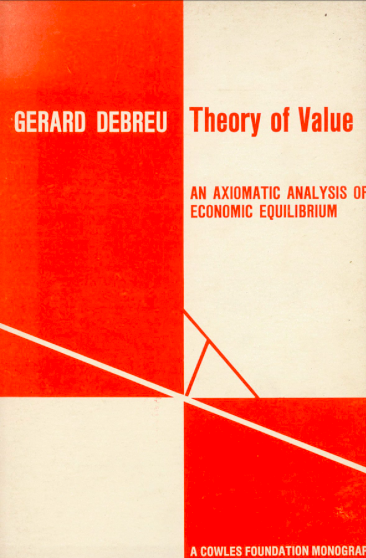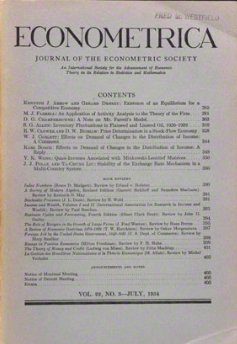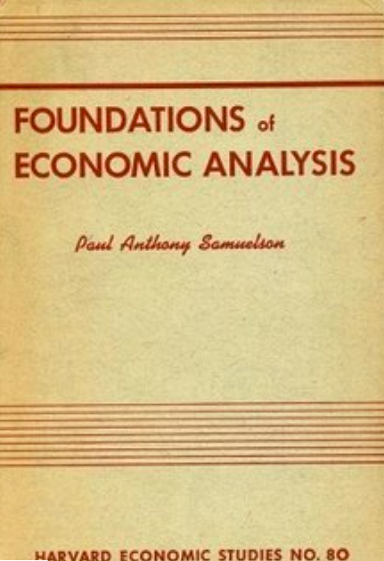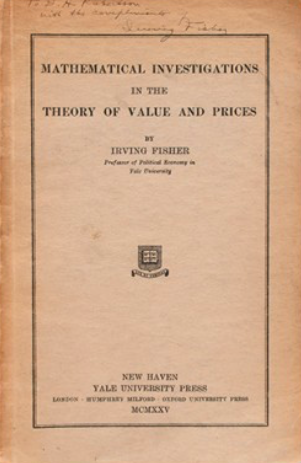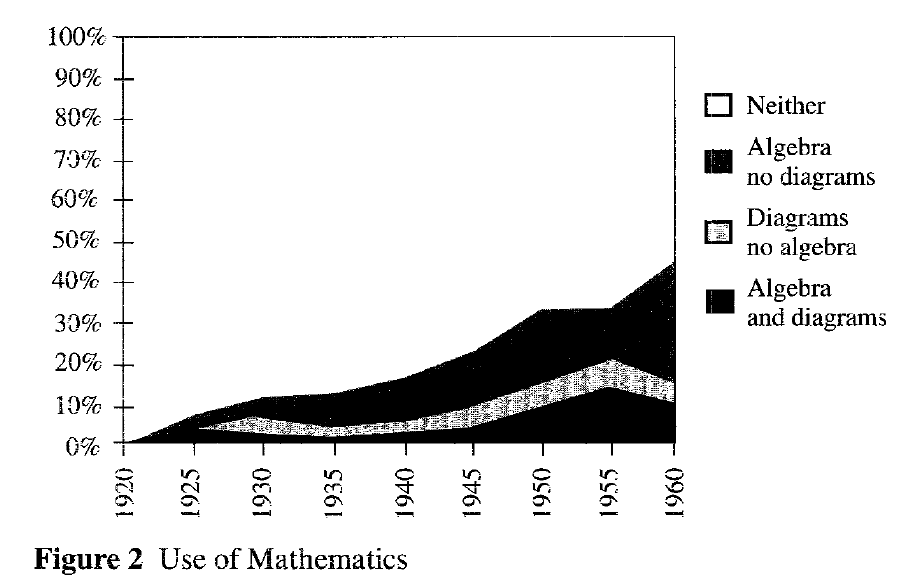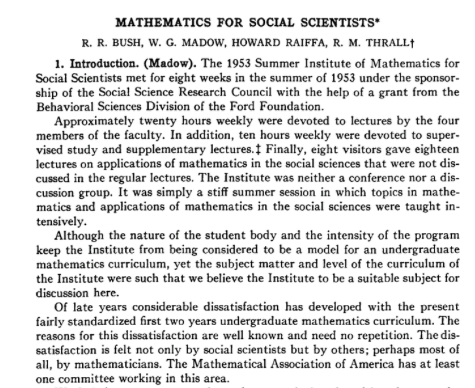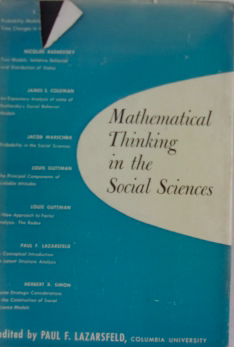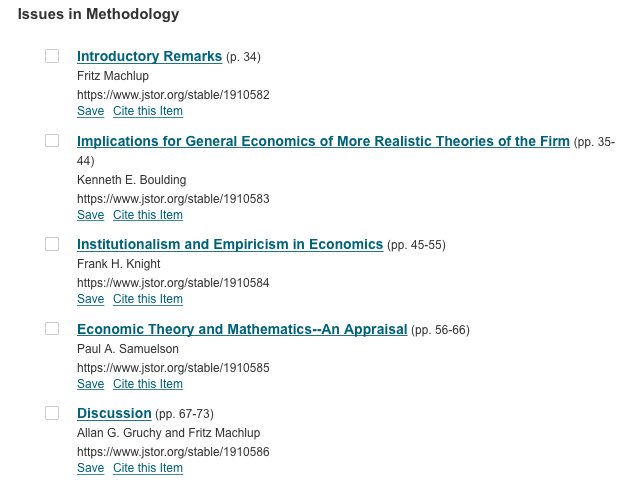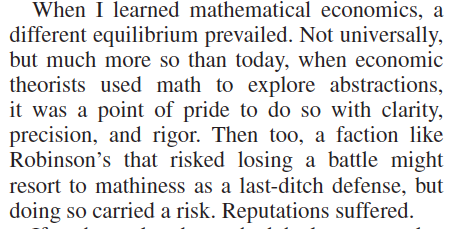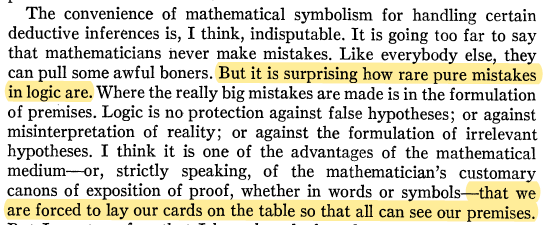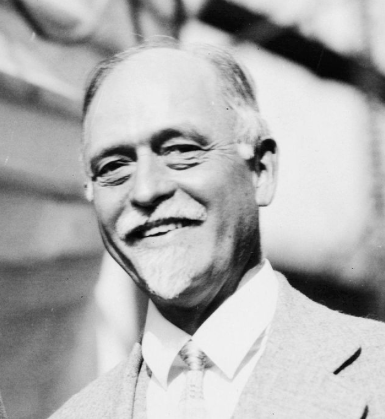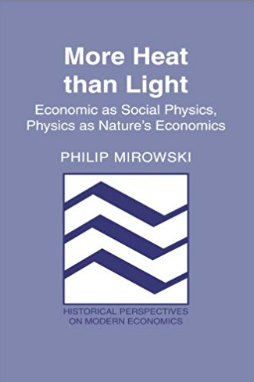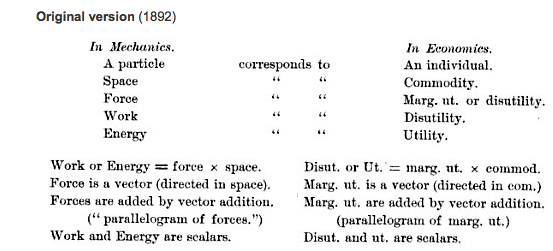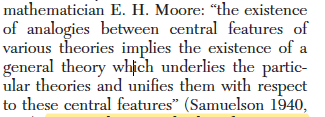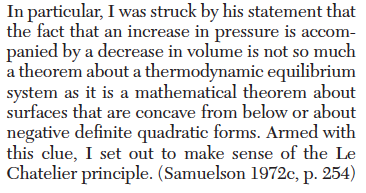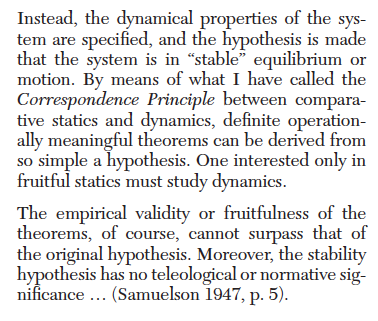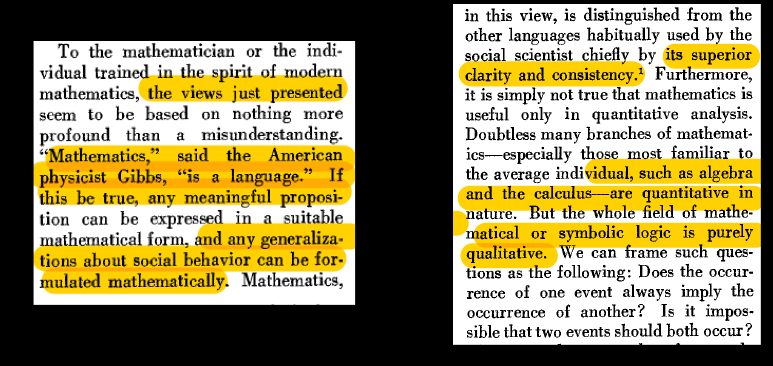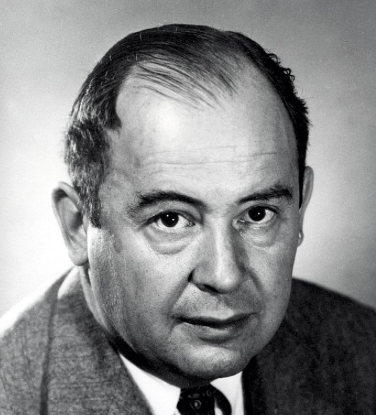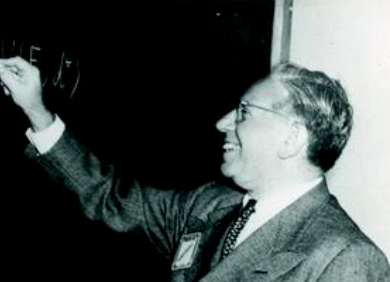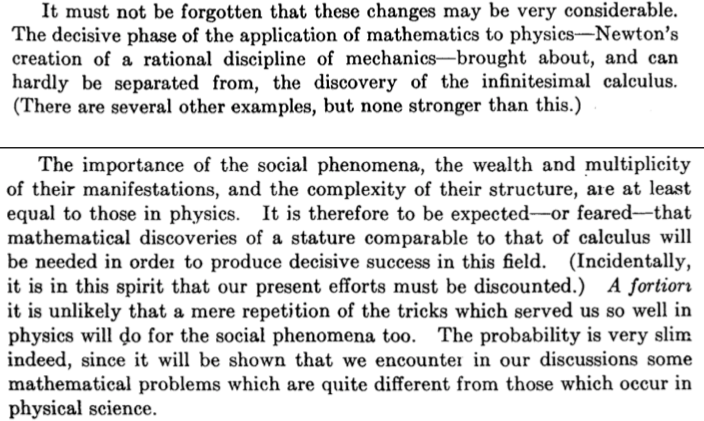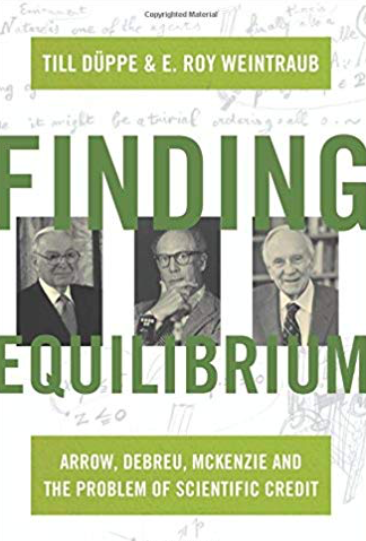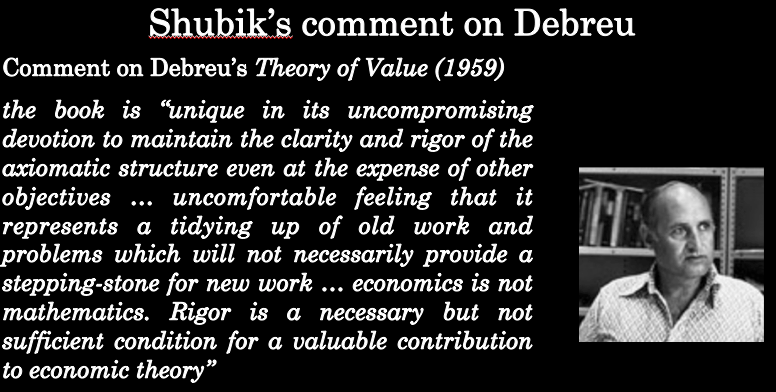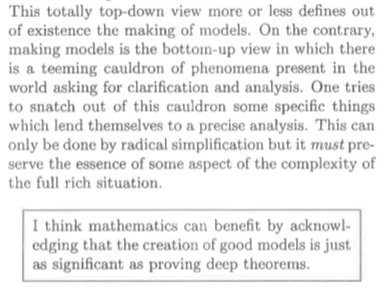I’ve been teaching post-45 mathematization of econ to @Bachelor_X, so here’s a tweetstorm on the topic
2 main ideas:
1)debates were not just on whether to mathematize but which maths to use
2)w/ tools were also imported mathematics epistemology & image battles on pure vs applied
2 main ideas:
1)debates were not just on whether to mathematize but which maths to use
2)w/ tools were also imported mathematics epistemology & image battles on pure vs applied
2/ I focus on 50s & 60s, as it was when the use of mathematical 'models' took off in economics (see Backhouse’s figure), though of course math econ has a much older tradition dating back to Cournot, Walras, Marshall, Pareto, Edgeworth…
3/ Context remark: econ was not alone in debating use of math. Exchanges & alliances w/ other social scientists pervasive, as shown by Madow report by Econometric Society & MAA https://www.jstor.org/stable/1907269?seq=1#page_scan_tab_contents or sociologist Lazarsfed’s Columbia lecture series & resulting publications
4/ In December 1951, the AEA organized a methodology panel, in which math was much discussed https://www.jstor.org/stable/i332667 . No participant opposed math straighforward, but institutionalists & Austrians outlined limitations:
(won't discuss math & empirical econ b/c it's next week topic)
(won't discuss math & empirical econ b/c it's next week topic)
1)use of math require quantification, yet econ also concerned w/ qualitative phenomena
2)use of math breeds unrealistic assumptions
3)difficulty of mathematizing complex & changing “collective” outcomes
4)maths useless to discuss “essence” of econ concepts (like value of goods)
2)use of math breeds unrealistic assumptions
3)difficulty of mathematizing complex & changing “collective” outcomes
4)maths useless to discuss “essence” of econ concepts (like value of goods)
6/ In reaction to Machlup, Knight, Boulding etc, Samuelson chose, as usual, to respond with a “middle-of-the-road” claim : mathematics and plain language are strictly identical. For instance, JB Clark “was talking the math of homogeneous functions and not knowing it.”
7/ Samuelson concluded diplomatic paper saying if econs were more brilliant, they possibly could dispense w/ math, but since so many logical mistakes were made, math language was more convenient. His work however show that there was more to his use of math borrowed from physics
8/ Some comparison w/ former generation helps here. One example of econ who eyed on physics was Irving Fisher.
As demonstrated by Mirowski ( https://www.cambridge.org/core/books/more-heat-than-light/4CD2ADE8D5DE8665E43E2922D7E360B3), Fisher’s importation of math from physics was driven by his import of physics substance/analytical structure
As demonstrated by Mirowski ( https://www.cambridge.org/core/books/more-heat-than-light/4CD2ADE8D5DE8665E43E2922D7E360B3), Fisher’s importation of math from physics was driven by his import of physics substance/analytical structure
9/ In his 1892 dissertation, Fisher attempted to translate physics notion into econ.
Viewed energy & utility as alike, which raised issues of integrability & of what exactly was the economic equivalent to law of conservation of energy
Viewed energy & utility as alike, which raised issues of integrability & of what exactly was the economic equivalent to law of conservation of energy
10/ Samuelson’s motives to tap physics were ≠. Introduced to thermodynamics by E.B. Wilson (Gibbs's student), he thought borrowing math structures (not content) used by physics would help him fulfill his project, exemplified by expert LL Moore quote opening his 1940 dissertation
11/ As documented by Backhouse ( https://www.aeaweb.org/articles?id=10.1257/jel.53.2.326 ), he was especially interested in how math underlying Le Chatelier principle could help him model idea “that the system is in stable equilibrium or motion in terms of an assumed dynamical system”
12/Same year, Arrow published stronger defense of math https://books.google.fr/books/about/Mathematical_Models_in_the_Social_Scienc.html?id=77mJHAAACAAJ&redir_esc=y
Derided idea that human being not amenable to mathematical laws. Math was clearer language, allowed qualitative analysis & empirical analysis through modeling stochastic character of econ relations
Derided idea that human being not amenable to mathematical laws. Math was clearer language, allowed qualitative analysis & empirical analysis through modeling stochastic character of econ relations
13/ Math didn’t merely enable study of individual behavioral when rationality was assumed, Arrow added, but also of collective behavior, detailing principles outlined in Von Neumann & Morgenstern’s Theory of Games
For the math Arrow advocated were ≠ from Samuelson’s
For the math Arrow advocated were ≠ from Samuelson’s
14/ Arrow endorsed Tarski's logic & axiomatics. he used convexity analysis in combinatorial topology, a tradition born in 1920s Vienna Menger seminar, where Wald & VN provided early existence proofs of general equilibrium using Brouwer's fixed point https://www.cambridge.org/core/books/von-neumann-morgenstern-and-the-creation-of-game-theory/FFF74A9B0D845E0BED16E91AFE4ED052
15/ VN & M even argued in intro of Theory of Games that differential calculus wouldn’t do job in econ (see below). Von Neumann & Samuelson clashed over which type of math was best suited to econ (a story Carvajalino is currently working on https://twitter.com/societies_het/status/1005103651864576002?lang=fr )
16/As related by Düppe & Weintraub, Arrow encountered VN’s vision of equilibrium as fixed-point in famous 1949 activity analysis conference, and through reading Nash 1951. Set out to model competitive equilibrium as game (through fictitious player choosing price system)
17/ Then refined proof with French math econ Debreu. Collaboration shows how, in spite of sharing axiomatics, their conceptions of right uses of math was ≠. Debreu raised as a Bourbakist, thus emphasizing rigor & generality, even arguing w/ Arrow against “forced interpretations”
18/ Düppe documents https://pdfs.semanticscholar.org/8571/737399d987e5c4ec6378ba68beb6b2a64216.pdf their many clashes. “We should make logical structure clear & distinguish assumptions,” Debreu wrote. “I disagree. The important thing is to display interdependence of math AND econ,” Arrow retorted. He emphasized realism & pedagogy:
19/ Debreu achieved his Bourbakian dream of unearthing a kind of mathematical “mother structure” for econ devoid of real-world traction in Theory of Value (1959).
Achievement was lauded, also criticized (here is Shubik’s review)
(on his bourbakism, see https://www.academia.edu/35881688/The_Pure_and_the_Applied_Bourbakism_Comes_to_Mathematical_Economics)
Achievement was lauded, also criticized (here is Shubik’s review)
(on his bourbakism, see https://www.academia.edu/35881688/The_Pure_and_the_Applied_Bourbakism_Comes_to_Mathematical_Economics)
20/ Bottom line “mathematization” no homogeneous trend. Which math divided even mathematical econ.
But there's more: these fights over image & uses of math were largely imported from mathematics itself, as explained by Weintraub ( https://papers.ssrn.com/sol3/papers.cfm?abstract_id=924221)
But there's more: these fights over image & uses of math were largely imported from mathematics itself, as explained by Weintraub ( https://papers.ssrn.com/sol3/papers.cfm?abstract_id=924221)
21/ 19th century econs picked up on vision of rigorous math model as one having physical interpretation. Then postwar econs absorbed XXth century notion of math rigor as associated w/ axiomatics, strong foundations & purity. These notions were challenged within math, however
22/Steingart ( https://dspace.mit.edu/handle/1721.1/84367?show=full) shows Cold War rise of stats, math econ & computer science brought protracted battles over identity of math itself. Should pure “core”, “bedrock” of math be emphasized? Or should pragmatic applied math policy-makers wanted get higher rank?
23/ These feuds in mathematics were echoed in econ, and eventual balance b/w 'theorem' & 'model' math achieved in math discipline ( http://www.dam.brown.edu/people/mumford/beyond/papers/1998d--TrendsProfMath-journal.pdf ) is not unlike what could be seen in econ in next decades (once anti-theory pushback is over)
/end/
/end/
Pedagogical context: student were given above papers by institutionalists/Austrians/math econ + recent ones, like Romer on mathiness. They have to stage a debate which they did brilliantly, shape their own view of math in econ, ask for more material (p-hacking, tractability)
Post-credit scene: recent research allow to compare mathematization of US econ w/ what was happening in USSR. 2 fascinating reads are @Ivan_A_Boldyrev & Kirtchik https://www.academia.edu/35836550/The_cultures_of_mathematical_economics_in_the_postwar_Soviet_Union_More_than_a_method_less_than_a_discipline_Studies_in_History_and_Philosophy_of_Science_Part_A_ as well as Leeds http://www.adamleeds.com/files/leeds%20-%202016%20-%20dreams%20in%20cybernetic%20fugue.pdf
Both papers emphasize that mathematical economics developed in less structured way, more in relation to cybernetics and to a ≠ communist social utopia. The result was less consistent intellectual programs developed, but very similar tools nonetheless (optimization, dynamics)

 Read on Twitter
Read on Twitter